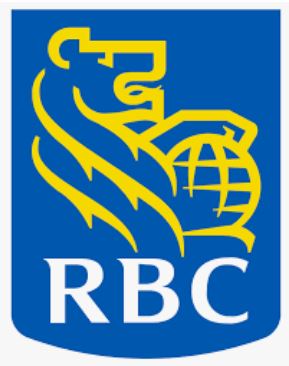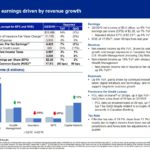Contents
Summary
- RY released Q2 2019 result May 23rd with adjusted diluted EPS narrowly exceeding analysts’ expectations.
- RY has a well diversified business model and maintains a strong Basel III Common Equity Tier 1 (CET1) ratio.
- Although RY is already one of my Top 10 holdings I have acquired additional shares for the FFJ Portfolio and for undisclosed accounts following the release of Q2 2019 results.
Introduction
In December 2018 I published a series of articles on the 5 major Canadian financial institutions in which I looked at Canada’s financial institution landscape, FY2018 results, FY2019 guidance, and valuation. I concluded each article with disclosure as to whether I would / would not be adding to my position.
Fast forward 6 months and the major Canadian financial institutions are in the midst of releasing their semi-annual results for FY2019. While a couple of the banks have yet to release their results it is clear from the semi-annual results released to date that some banks are far outperforming others.
In the first article of this series I looked at The Canadian Imperial Bank of Commerce (CM). On May 22nd, CM reported weaker performance in its core domestic retail banking unit which contributed to the weaker than projected Q2 analyst expectations.
While the results are somewhat disappointing, I hold shares in the 5 major Canadian financial institutions for the long-term. I, therefore, do not get concerned when a bank stumbles and the share price takes a hit. I look upon weakness as a buying opportunity which is why I have acquired additional CM shares for the FFJ Portfolio and for undisclosed accounts.
On May 23rd, The Royal Bank of Canada (RY) released semi-annual results which narrowly beat Q2 profit estimates amid growth in most of its major divisions, including its core domestic unit. Analysts, on average, expected $2.21 per share but RY reported $2.23 on an adjusted diluted per share basis.
Q2 total net income rose 6% YoY to $3.23B with profit from Canadian banking rising 2% YoY to $1.46B.
Overall credit quality improved with provisions for loan losses falling to $0.426B from $0.514B in Q1. RY, however, set aside more money for loans that could go bad in its core P&C business.
While results were pretty much in line with analyst expectations, RY’s shares suffered a mild pullback following the release of Q2 results.
Although I do expect long-term capital gains growth from my investment in the major Canadian financial institutions, dividend income generated from these holdings is my primary reason for investing in these banks.
In this article I look at RY’s valuation and dividend yield based on my expectation in dividend growth over the next 4 quarters and disclose whether I have acquired additional RY shares following the release of Q2 results.
Q2 and YTD2019 Results
RY’s results can be accessed here and a detailed investor presentation can be found here.
Source: RY – Q2 2019 Earnings Presentation
On the Q2 call with analysts, RY’s management indicated that gross impaired loans increased 3 bps from Q1 to $3B. RY indicated there are headwinds impacting a number of its oil and gas sector clients, mainly in the U.S..
Impaired loans in this sector continue to be well-structured, with RY’s seniority and collateral providing it good protection against loan losses. Given this, RY is of the opinion that despite the elevated level of impairments it continues to be adequately secured and risk of loss should continue to be relatively limited number and widely dispersed across geographies and sectors.
The Canadian retail portfolios in Q2 were generally stable with the exception of its cards portfolio where seasonal factors led to higher provisions in the quarter. Overall, the performance of RY’s retail portfolios is as expected and is expected to remain so for the remainder of FY2019.
RY continues to be well-disciplined in its loan underwriting process and it is comfortable with the credit profile of its portfolios. Although there have been elevated levels of impairments and provisions in the wholesale portfolios relative to the exceptionally low levels experienced in 2018, RY does not see this as indicative of a material credit trend.
Risk
RY operates in a highly regulated business and RY is in the business involves taking and controlling risk, and therefore, as an investor I am grateful the industry is highly regulated.
RY’s consolidated regulatory capital requirements are determined by guidelines issued by the Office of the Superintendent of the Financial Institutions (OSFI), which are based on the Basel III framework adopted by the Basel Committee on Banking Supervision (BCBS).
RY’s Basel III disclosure can be found here and its detailed Pillar 3 report as at April 30, 2019 can be accessed here.
Credit Ratings and Risks
RY's current ratings and outlook from 4 ratings agencies meet my risk tolerance level.
The Risk Review component of RY’s Q2 Investor Presentation found on pages 13 – 17 provides an overview of the risk aspect of the bank’s various credit related lines of business.
Valuation
RY has reported EPS of $4.36 ($4.08 – 2017) and YTD diluted EPS of $4.34 ($4.07 – 2017) for the first half of the year.
In FY2018 it reported $8.39 of EPS and $8.36 of diluted EPS versus $7.59 and $7.56 in FY2017. This diluted EPS growth of ~10.58% meets RY’s 7%+ medium-term profitability objective.
In FY2012, FY2013, FY2014, FY2015, FY2016, and FY2017, RY reported 12% 12%, 9%, 12%, 0.7%, and 11.5% of diluted EPS growth; FY2016 diluted EPS growth was negatively impacted by RY’s acquisition of City National Bank due to the issuance of common shares.
If we increase RY’s FY2018 diluted EPS of $8.36 by 7% we arrive at projected diluted EPS of $8.95. Having generated $4.34 in diluted EPS in the first half of the year, RY needs to generate $4.61 in the second half of the year to reach $8.95.
While there certainly are headwinds, RY is managing its various lines of business accordingly. I am, therefore, cautiously optimistic it should be able to generate at least $8.95 in diluted EPS for the year.
When I wrote my December 2, 2018 article, RY was trading at ~$97.42. This gave us a forward diluted PE of ~10.88 using FY2019 diluted EPS of $8.95.
With RY now trading at $102.64, we arrive at a forward diluted PE of ~11.47 which is lower than the ~12.5 5 year average.
Dividends
RY’s dividend history can be found here.
RY will be distributing its first $1.02 dividend on May 24th and I fully expect the second $1.02 quarterly dividend to be distributed late August. I then expect at least a $0.03 increase to RY’s quarterly dividend commencing with the November 2019 dividend. A second $1.05 quarterly dividend is also likely to be distributed in February 2020. I then expect the May 2020 dividend to be increased to $1.08.
Adding the projected quarterly dividend payments starting with the August 2019 dividend I get an annual dividend of $4.20 ($1.02 + $1.05 + $1.05 + $1.08). With RY trading at ~$102.64 we arrive at a forward dividend yield of ~4.09%.
This dividend yield is not as attractive as CM’s dividend yield but I would not expect RY which is of far superior quality than CM to have a similar dividend yield. Nevertheless, RY’s dividend yield is attractive from my perspective.
Final Thoughts
I have found it extremely difficult in the last 3 months to identify companies which I deem to be attractively valued. As a result, most of my articles have concluded with a decision not to initiate / increase a position.
Recently, however, my analysis has led me to the decision to acquire additional shares in a couple of companies (see here and here). I am now adding RY to the brief list of companies where I have decided to increase my exposure even though it is currently one of my largest holdings. I have acquired shares on May 23rd for the FFJ Portfolio and for undisclosed accounts.
I hope you enjoyed this post and I wish you much success on your journey to financial freedom.
Thanks for reading!
Note: I sincerely appreciate the time you took to read this article. Please send any feedback, corrections, or questions to [email protected].
Disclaimer: I have no knowledge of your individual circumstances and am not providing individualized advice or recommendations. I encourage you not to make any investment decision without conducting your own research and due diligence. You should also consult your financial advisor about your specific situation.
Disclosure: I am long CM and RY.
I wrote this article myself and it expresses my own opinions. I am not receiving compensation for it and have no business relationship with any company whose stock is mentioned in this article.




